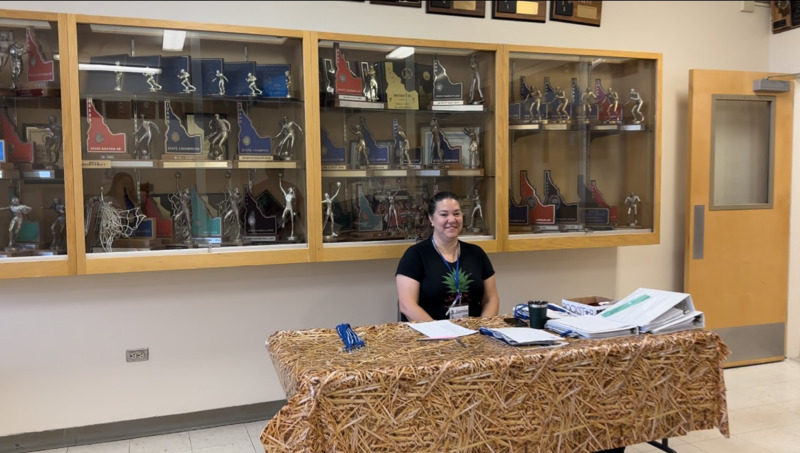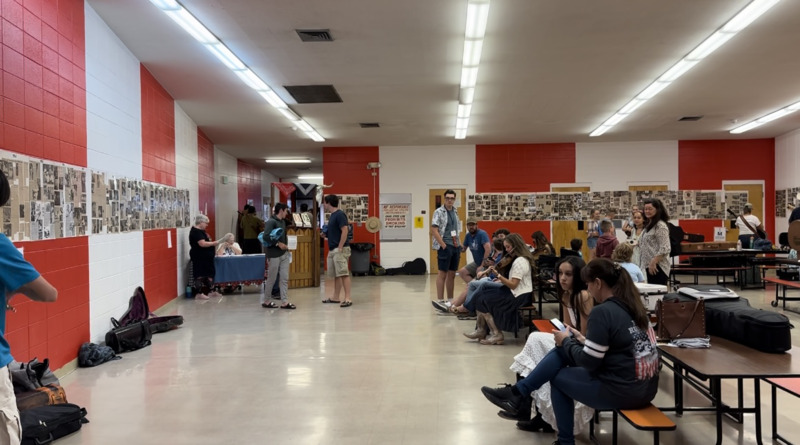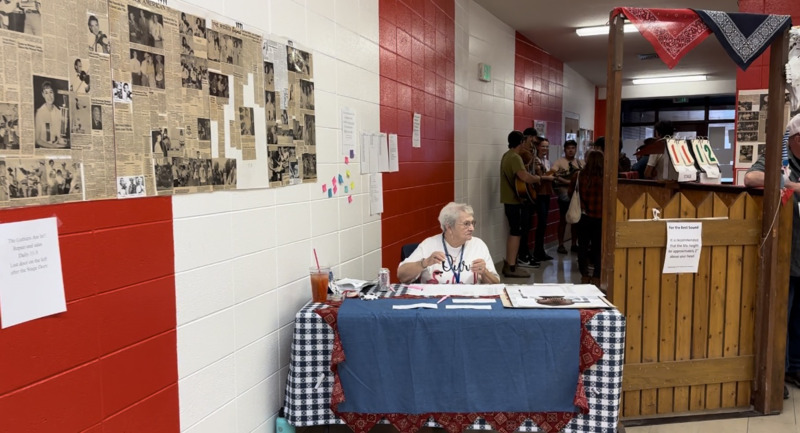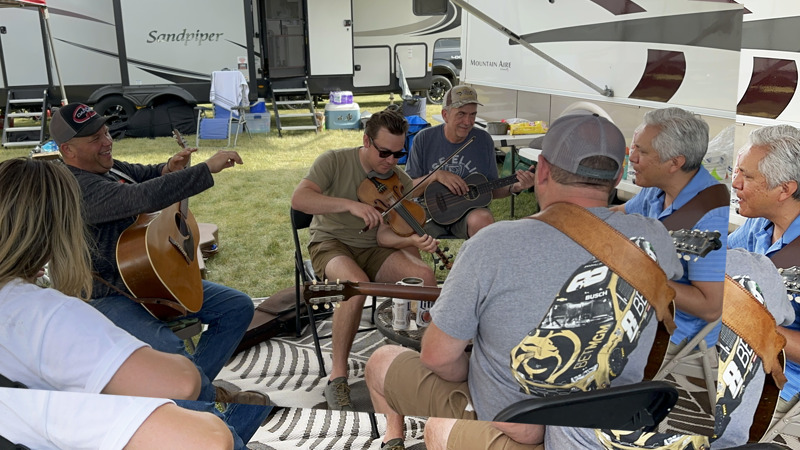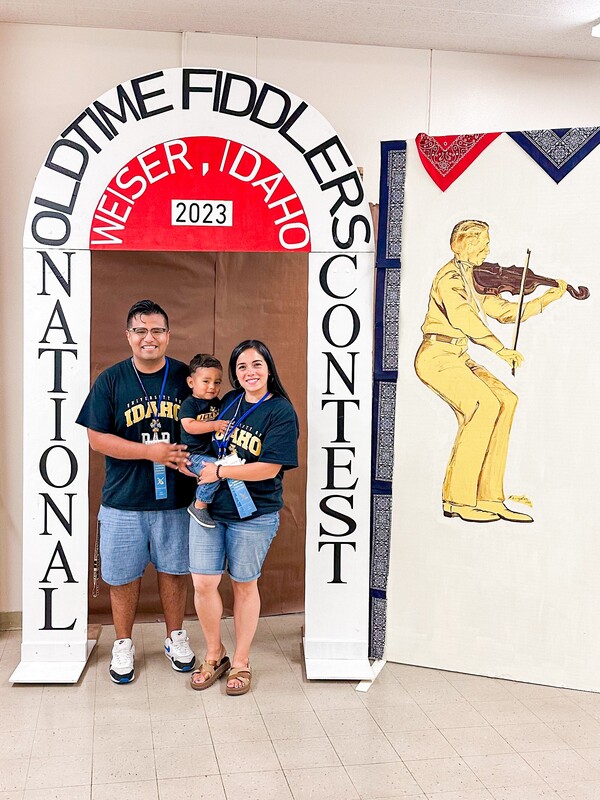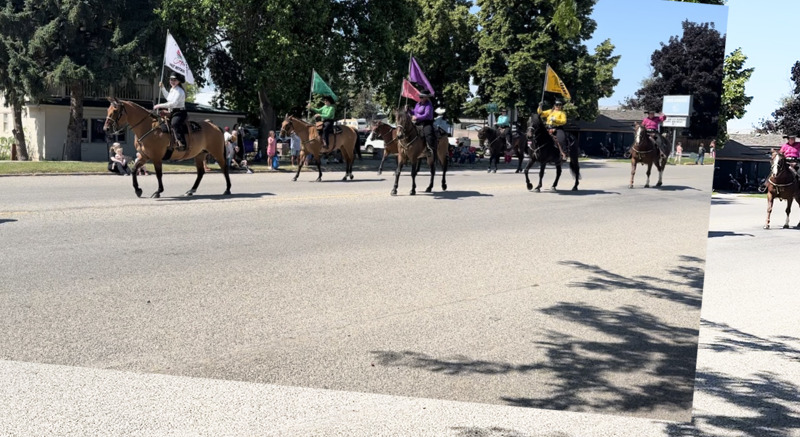Written by Daniel Olortegui Vargas.
One of the most renowned and influential fiddle competitions in America happens each year in Weiser, Idaho. Located in southwest Idaho, Weiser sits at the confluence of the Wiser River and the great Snake River. A little over 5,000 people call it home, but that number swells during the third week of June. Fiddlers and other musicians from about every state and many from abroad attend the event. The contest is held in the Weiser High School. Inside the high school, musicians in cowboy boots and straw hats practice and compete. The school is buzzing with excited energy, filled with sounds of dozens of musicians playing and practicing simultaneously in every key on a fiddle finger-board. Outside the quiet room where the actual competition is held is a strange jumble of notes with a strident Western flavor.
Once the patrons and contestants enter the event venue, contest registration is the first station. This station is critical since the contestants check in if they registered online before the contest or register if they still need it. In this place, the person in charge gives the contestants a name tag to give them access to all events. In 2023, the person in charge of this station was Jamie Hill, who happens to work for the University of Idaho on the Moscow campus. She was tremendously helpful in processing and adding context to the Oldtime Fiddlers Contest materials that were donated to the University of Idaho (read more about that here.)
Once inside, the contestants gather in the high school cafeteria, known as the practice room. This place is where the magic begins. Fiddlers practice their presentations that they will later play in front of the public and judges. This room has a great history behind it. It has witnessed the beginnings of numerous legends who have attended the event since they were little. Many fell in love with the fiddle in this room, watching the contestants practice or having one of the contestants give them their first fiddle lesson. All of that took place in this place. We leave to the imagination how the contestants listen to themselves because, in this room, everyone plays simultaneously. However, in some almost mystical way, the fiddlers listen to each other and bring out magical melodies that captivate the audience.
The contestants practice in this room but also look forward to being called to present their three songs. Frank and Julie Eisenhauer oversee this phase. Each participant has a number; Frank and Julie are in charge of ensuring that the fiddler goes on stage and that the one that follows gets ready so that everything flows as quickly and orderly as possible. It is essential to mention that the Eisenhauer’s has been linked to this contest for 56 years.
After going through Jamie Hill and the Eisenhauer’s, the contestants show what they are made of. They show the result of months and even years of preparation for the public to enjoy and to achieve the best score among the judges. The fiddlers enter the stage and play their three tunes. One of the tunes must be a hoedown, one must be a waltz, and the other is a “tune of choice” (something different than a waltz or hoedown).
A strict time limit depends on the division and the round number. Contestants are classified into different age groups, and judging is based on danceability, old-time style, rhythm, and tone. If contestants win the first round, they move on to the subsequent rounds or playoffs. Contestants at Weiser are divided into seven age divisions and an open division. The Grand Champion Division is open to all ages, and the final five play five rounds and fifteen tunes unless a tie results in the final round.
Before a division competition starts, the judges play to show why they are judges. In 2023 there were four judges, John Francis, Danita Rast, Luke Bulla, and Mia Orosco-Kelso. The general requirement to be a judge in this competition is to have won the National Grand Champion. As the artists play, the judges carefully listen to each performance to issue the deserved score. To give the best score without bias, the judges assemble on the floor below the stage in a room with speakers. The judges do not look at who is playing and only listen to the tunes.
The judges have their computers and put their scores there after the contestants play. After the judges issue the scores, someone from the staff who is sitting next to the judges takes a piece of paper and writes the number of the contestant, the round, the date, the division, the score of the three tunes, and the name of the judge who gave that score. Once this paper is done, it goes to the office next door. Only a select few volunteers see the scores from each round of the contest, and artists do no find out their scores until the contest if over. The only publicly released information after each is a list of the contestants that will be moving on to the next round. Those names are randomized so it is impossible to know their ranking. The care that so many people have for this event is evident at every step.
Fun is not only found in high school. Outside the high school is the campground, which fills up with RVs and tents throughout the week of the festival. If someone wants to enjoy this festival fully, they must stay in the high school campground. There you will hear fiddling from dawn until past midnight. It is a truly remarkable experience.
I very much enjoyed attending the Oldtime Fiddlers’ Contest with my wife Duby and my son Sergi. I extend my thanks to Gary and Carolyn Strong, who generously supported my fellowship over the summer. The experience allowed me to cover expenses and also obtain new skills that will benefit me in the future. As I begin the second year of my graduate school in the history department, I will bring with me what I learned while working on this project.


